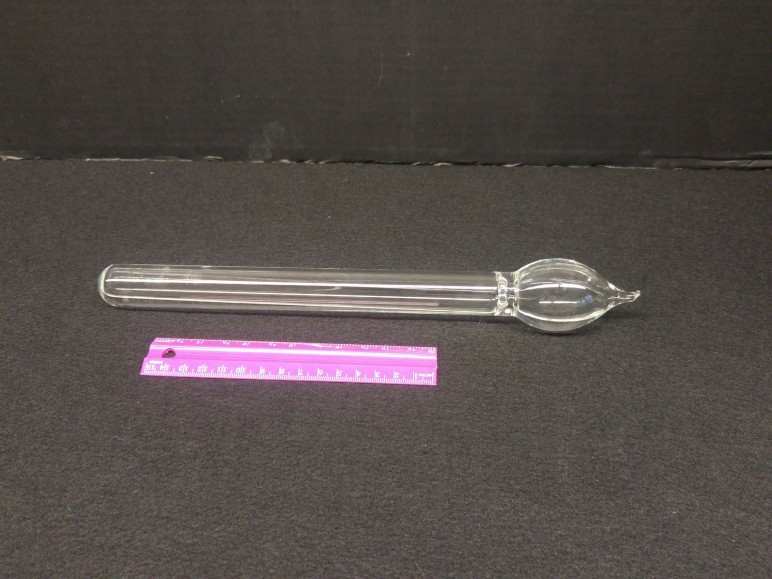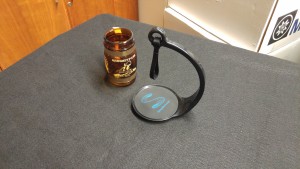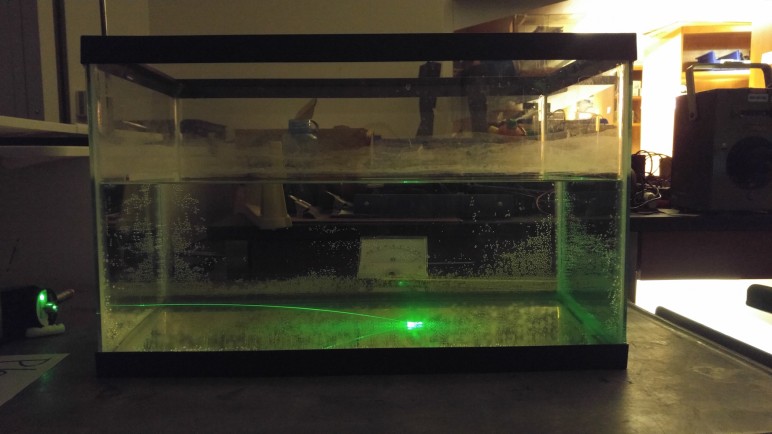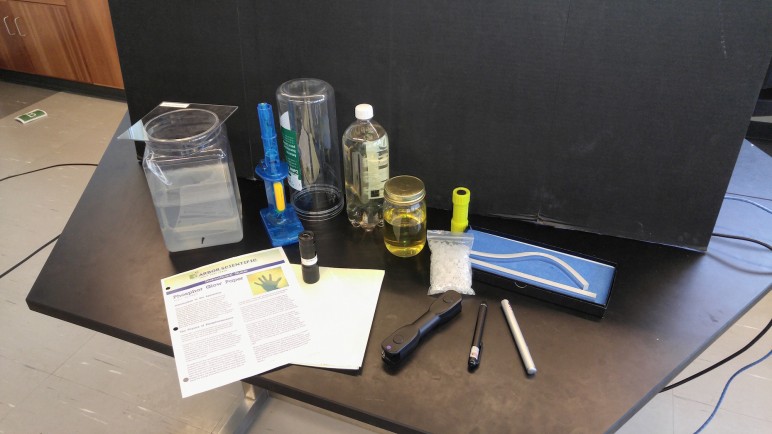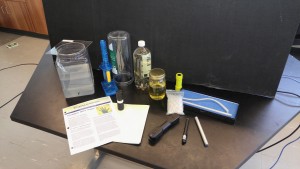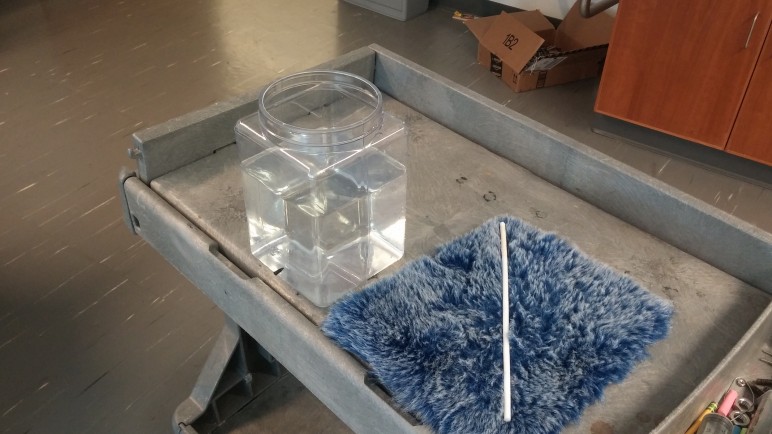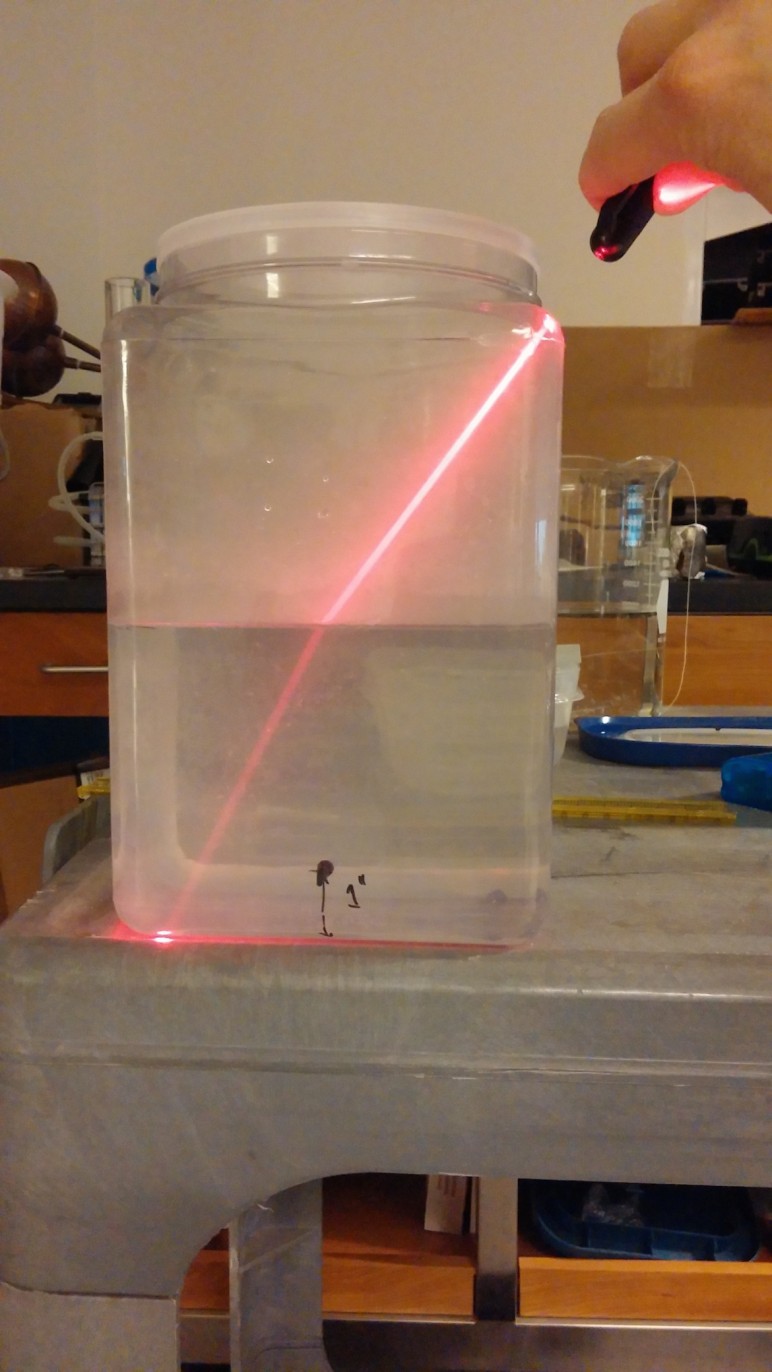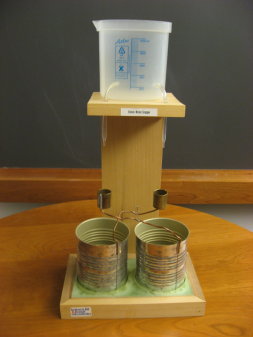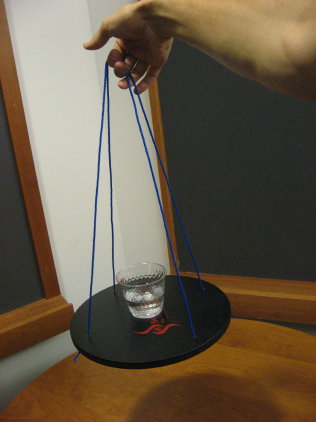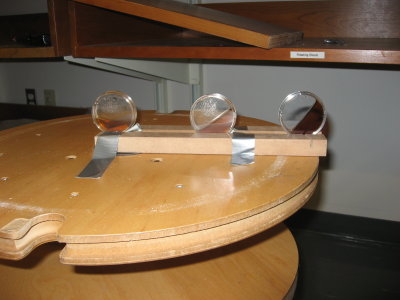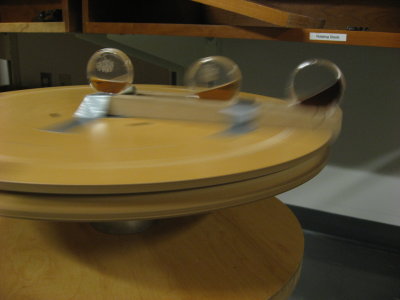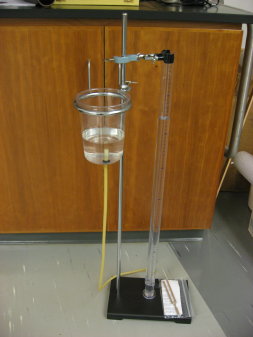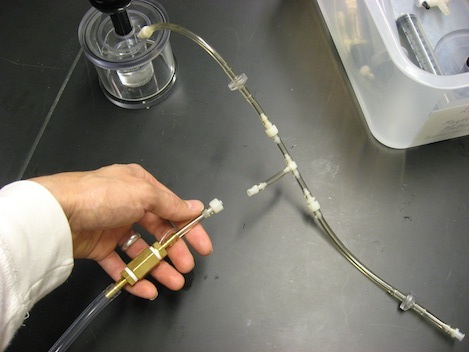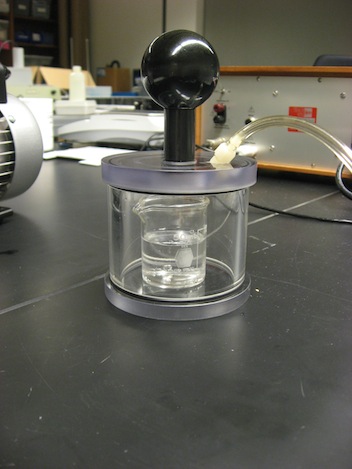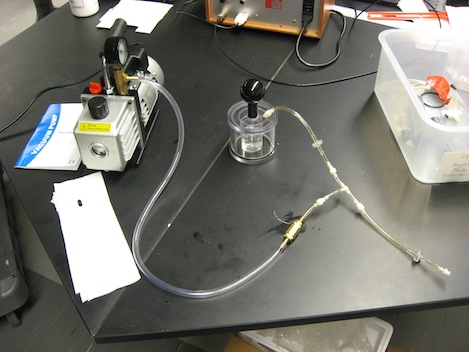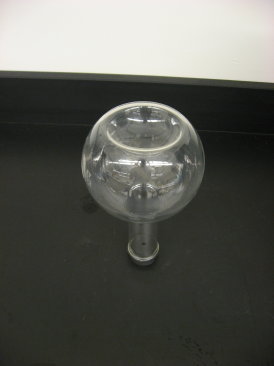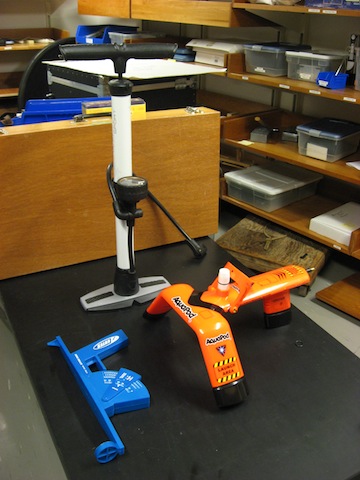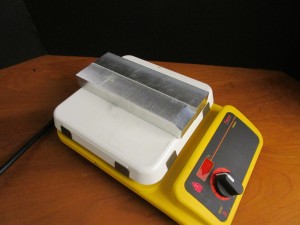

Heat aluminum blocks to 350 degrees C using adjustable hot plate shown in photo.
Use water dropper (with demo) to place droplets of water onto surface of hot aluminum blocks. Leydenfrost effect causes droplets to hover, and prevents them from evaporating immediately.
Droplets on the ridged block are propelled along the surface- from right to left in above photo.
Raise one edge of the hot plate slightly, so that droplets on smooth surface slide down while droplets on the ridged surface climb up.
See more about this here: http://www.wimp.com/when-water-flows-uphill-the-leidenfrost-effect/
